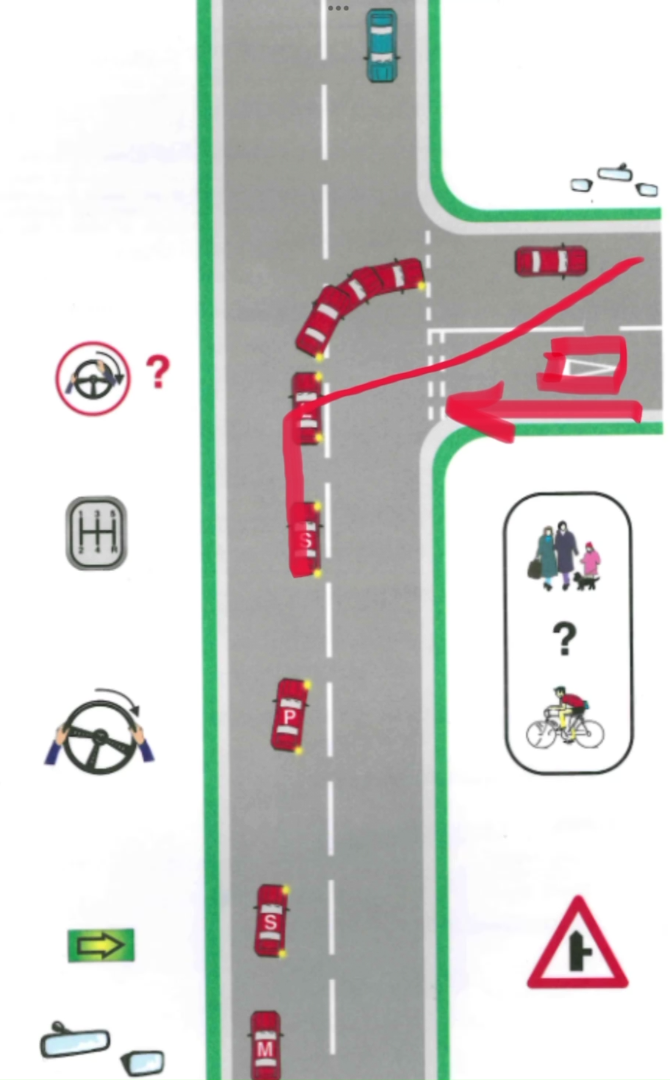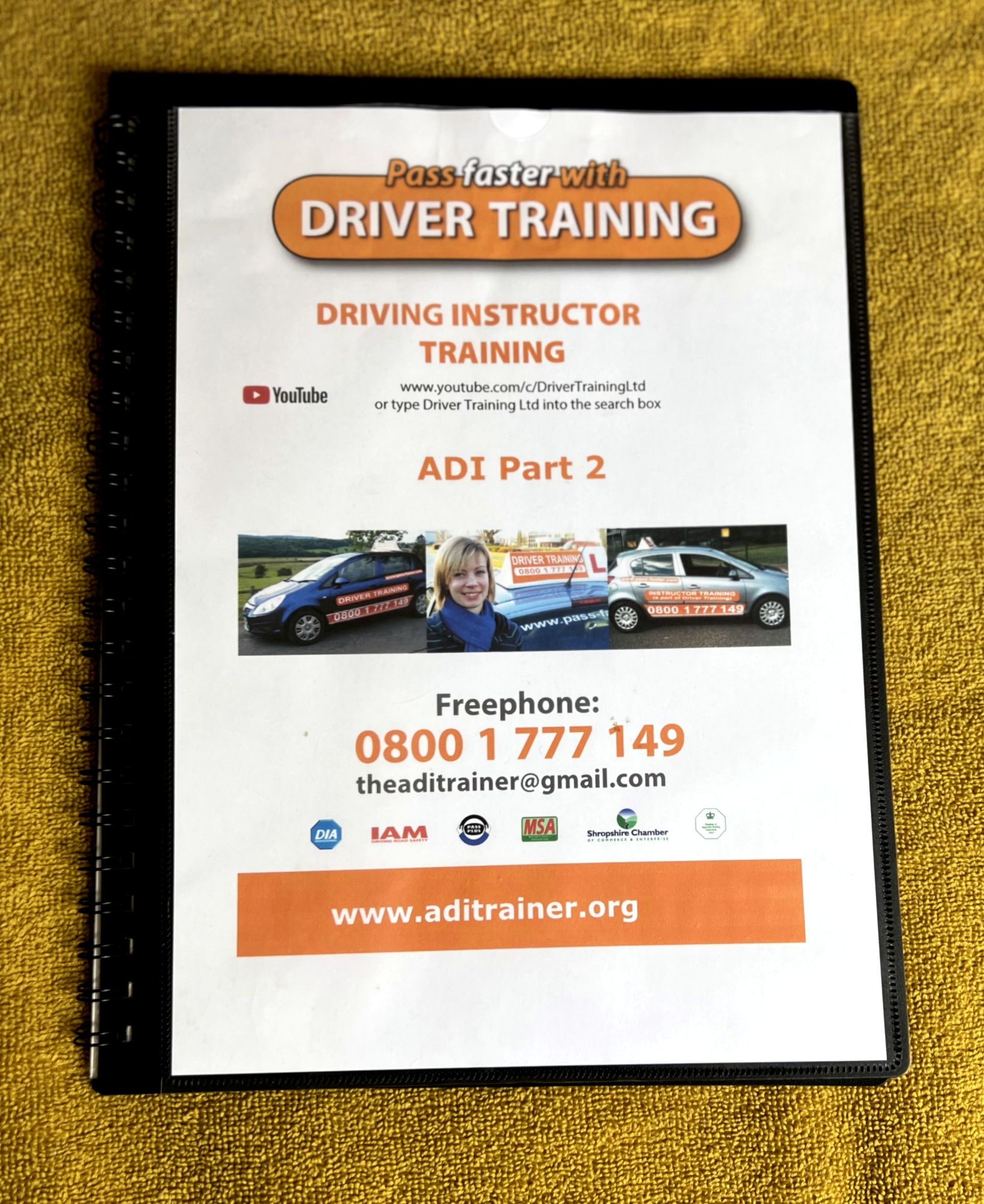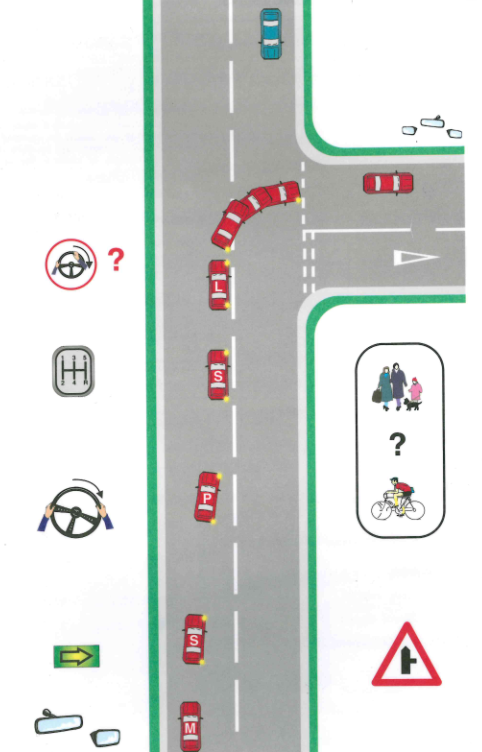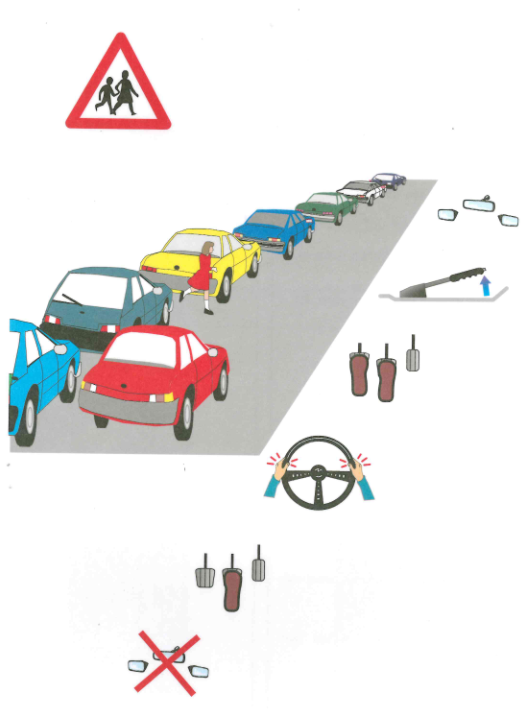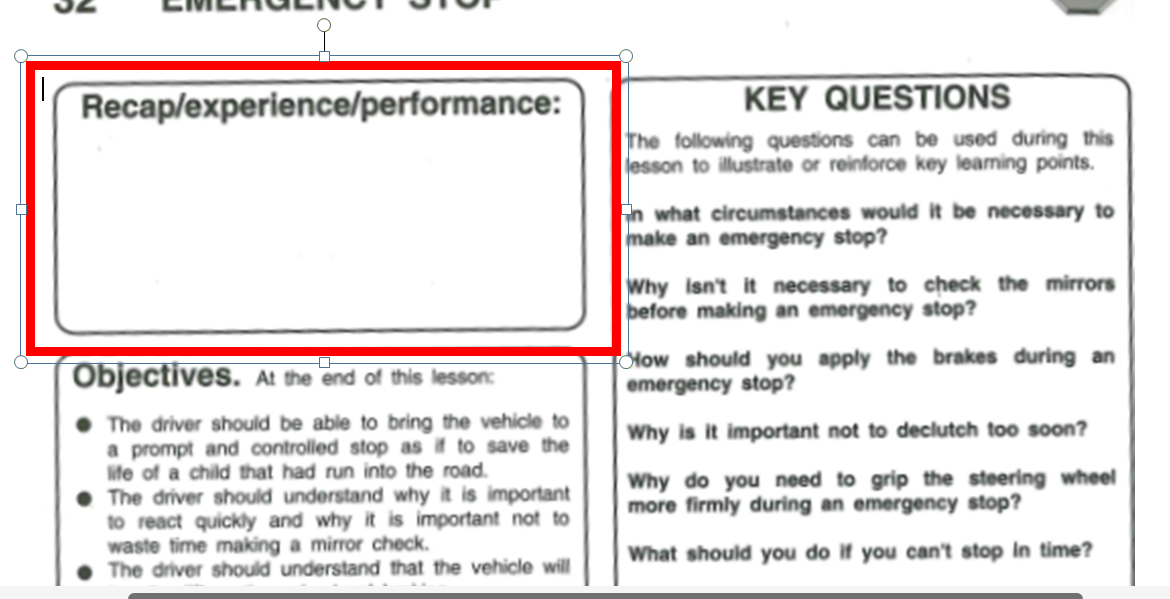Using A Briefing Folder
Using A Briefing Folder
If i said to you, "think of a dog" - What comes to mind? Is it tall or short? Light or dark? Long hair or short hair? Young or old?
Now when i said think of - a dog-
Why didn't you think of the letters A-D-O-G?
One simple reason - Humans think in pictures not words!!
As the saying goes "A picture paints - A THOUSAND words.
And that is what a briefing folder does, it provides an overview of the topic that you are about to teach and puts it in a very brief easy to understand way
What is a Briefing Folder and Why Do You Need It?
Ever tried explaining to someone how to ride a bike?
Give it a try and see how difficult it is - Now simply show them
What is a briefing folder?
Why Do You Need One?
How Do You Use It?
Try explaining to someone - step by step - how to get on a bike
Then show them - see which one is easier to follow!
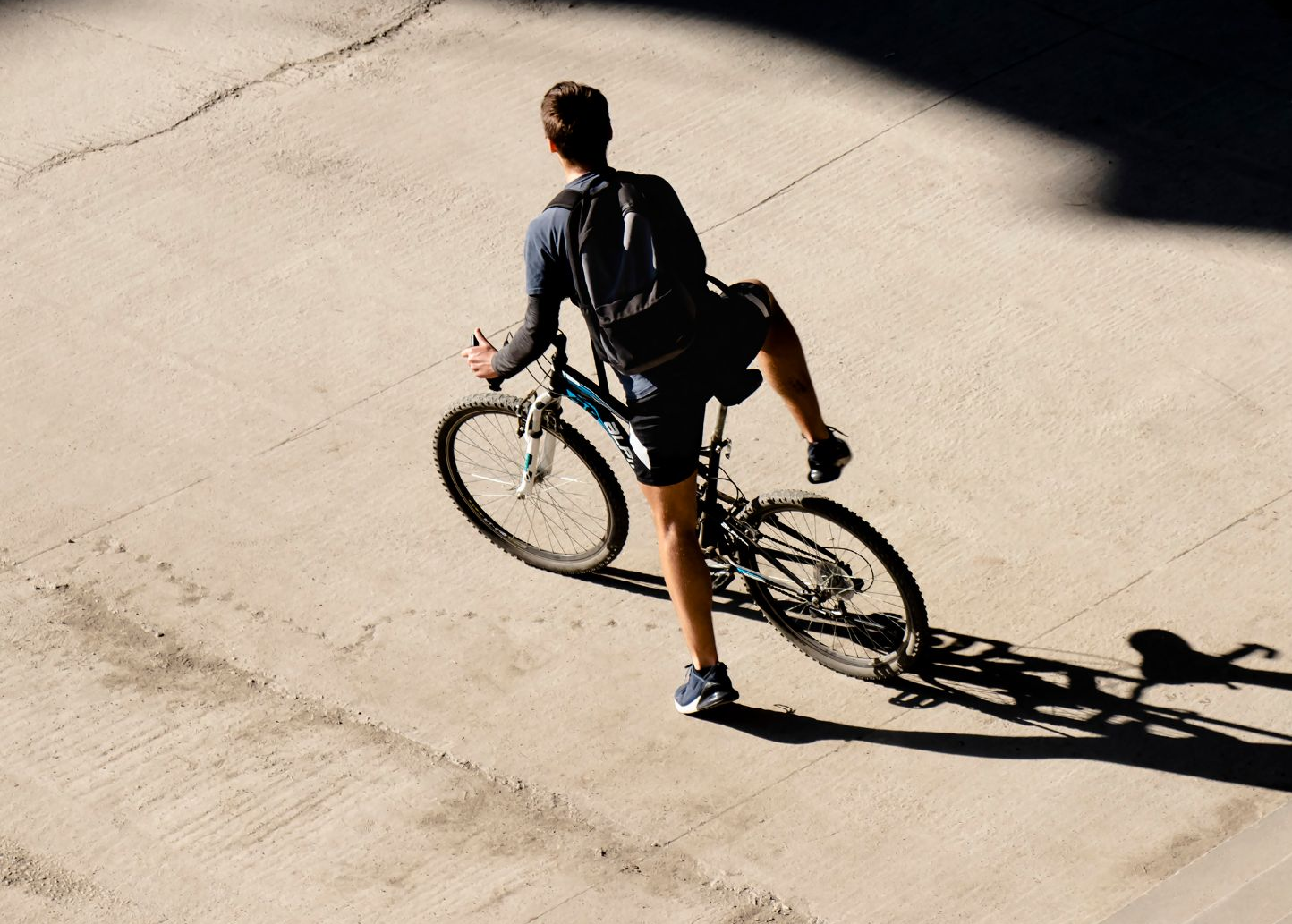
Briefing Folder and Teaching
Because we think in pictures, we are able to grasp what is expected more easily than trying to figure out for ourself, what a person actually is trying to tell us.
It remains a fact that three quarters of your pupils' knowledge is gained from visual stimuli and quite naturally the DIA and the Driver & Vehicle Standards Agency (DVSA) recommend full use of visual teaching aids.
The high visual impact of this product is designed to attract your learners’ attention, stimulate interest and save teaching time.
Our Briefing folder promotes a structured approach to teaching by means of specified learning outcomes, making it the preferred resource for driving instructors
Briefing Folder Diagrams
This training aid will help trainee and qualified instructors to select the relevant information for their lessons without reference to copious notes. Correct and effective use of a briefing folder in a part 3 instructional ability test or check test will demonstrate candidates’ awareness of the need for a structured approach to teaching.
The briefing folder is designed to aid the instructor with lessons given to a 'beginner', right through to a pupil approaching 'test standard' and beyond. With a few obvious exceptions, the arrangement of the lesson plans within this resource is not intended to impose a strict order in which lessons should be given.
This will depend on your pupils' needs, ability and confidence, and your particular location and circumstances.
Briefing Folder Explained
The briefing folder is layed out in such a way as to help you as a teacher.
The right hand page is the diagram and this can used to focus the pupils attention on what is going to be attempted.
The left page has the lesson set out for you to follow the boxes. This set up is exactly the way the DVSA expects you to structure the lessons and the ADI Part 3.
RECAP - What were you doing last lesson? How what we are doing today is the natural next step. Also when covering things like the emergency stop, you can link in, have they had to stop quickly when traffic lights have changed to red? Have they approached a roundabout and a car comes flying around, forcing them to brake?
These are the same skills we will develop on this lesson.
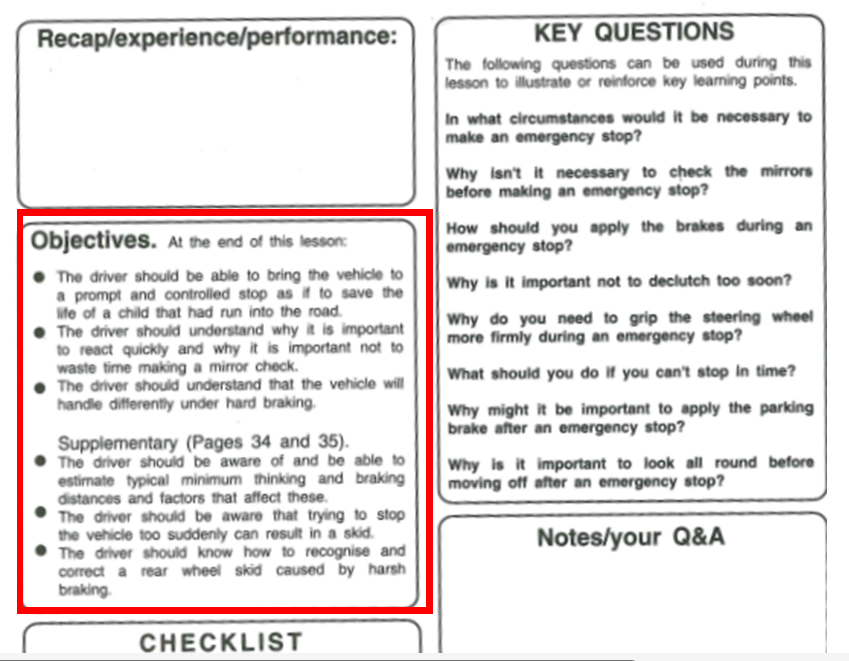
2. OBJECTIVE Of Todays Lesson
This just gives the pupil an overview of what we are about to go through and the result at the end - This can just be read out until you are more familiar with the subjects.
So by the end of todays lesson chris, you should be able to bring the vehicle to a prompt and controlled stop as if to save the life of a child who may have ran into the road.
You'll be more confident to react quickly and bring the vehicle safely to a controlled stop
You will understand more about not wasting time doing a mirror check and how the vehicle can react differently under hard braking.
Checklist - Briefing Points
These are the main points of the briefing about the subject that you are about to cover.
Quick Reactions - When I say stop chris, i'd like you to quickly go onto the brake
Firm and Progressive Braking - We don't want to slam the brake on as that could cause us to skid out of control. We want to brake quickly but keep control - Like having to stop quickly because of traffic lights going onto red.
Steering - We want to keep our arms in the normal driving position and not swerve. Your arms act as a shock absorber to stop you going forward.
Declutch - BBC - Brake before clutch. Pressing the clutch first can be we actually pick up speed. But not pressing the clutch down would mean we stall and shoot forward.
Observation - All around, left blindspot and left mirror first as we didnt intend to stop there, so we are nowhere near the kerb, so bikes and scooters could come up the inside of us.
Then centre, right and right blindspot before moving off.
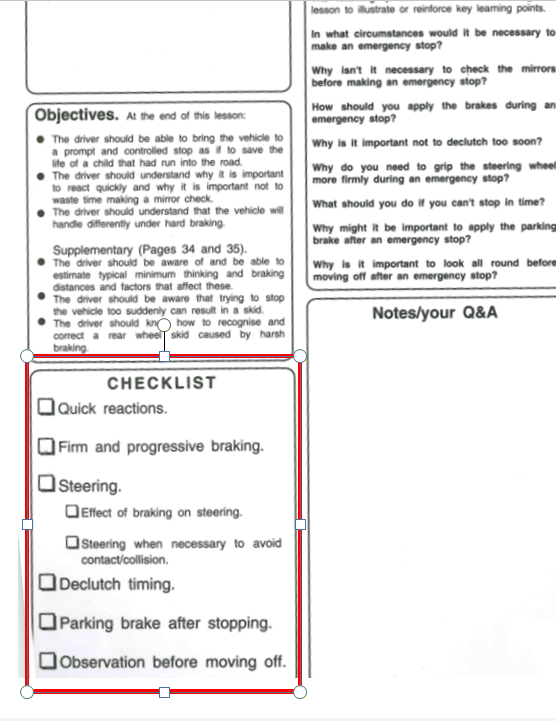
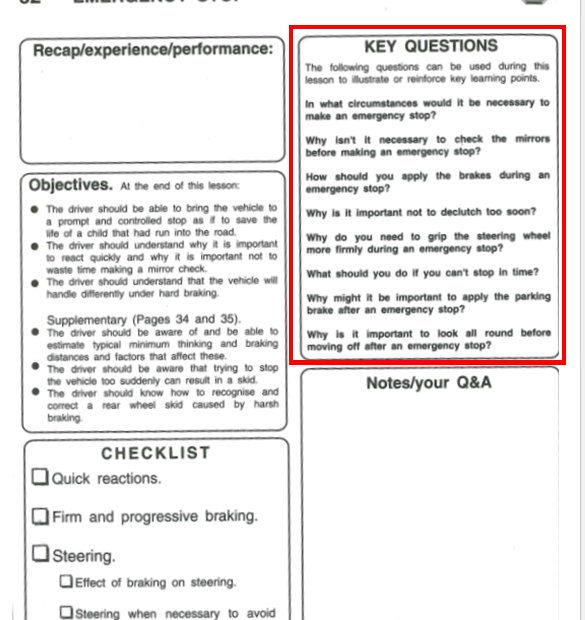
Key Questions - If its not their first time
Key questions: the pupil should be able to answer these if the objectives have been met.
You can also use these if you are covering the topic with someone who has done it before, in this way you are finding out their knowledge of the subject without trying to tell them, what they already may know.
You can select and/or rephrase the questions according to the ‘range’ of your lesson.
Rephrasing does not matter providing that the questions you use are structured to aid the learning process.
Your Notes
This box is blank for you to add your own notes or questions with a permanent marker.
You may want to print these on self-adhesive labels.
You could also use this box to cross-reference your lesson to other pages such as the workstations.
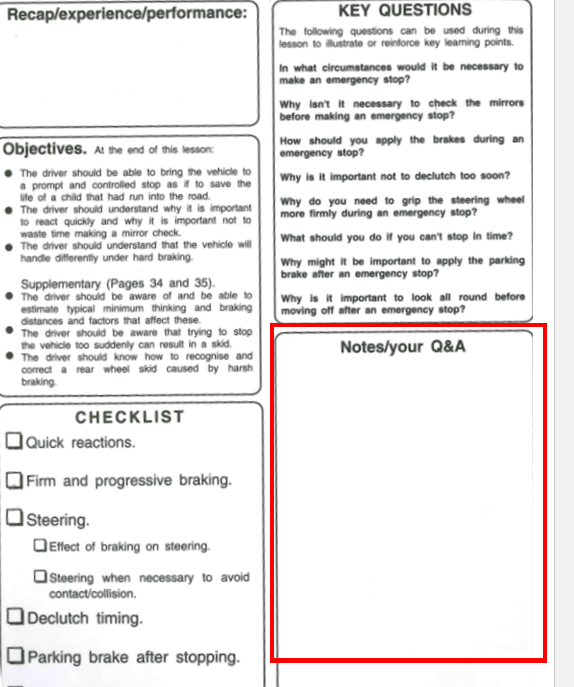

helping the pupil understand any mistakes
Instructor - Back there chris you crossed the line, did you see it?
Chris - no?
Instructor - Well try not to do it again, look at where your mirror is first.
Chris - ????
---------------------------------------------------------------------------------
What subject am i teaching? What was the pupils mistake? Why was it wrong? What were the possible consequences? How can the pupil make sure it doesnt happen again?
As the instructor you know - because you have a picture of it in your head and your hands will be waving around explaining it
BUT YOUR PUPIL HAS NO IDEA WHAT YOU ARE ON ABOUT BECAUSE THEY DON'T HAVE THE PICTURE THATS IN YOUR HEAD!
Understanding What Went Wrong
What subject am i teaching?
What was the pupils mistake?
Why was it wrong?
What were the possible consequences?
How can the pupil make sure it doesnt happen again?
I HAVEN'T SAID ANYTHING - JUST ASKED 5 QUESTIONS AND YOU'VE ANSWERED THEM FOR YOURSELF
THATS EXACTLY HOW YOUR PUPIL WOULD REACT WITH USING A BRIEFING FOLDER
It helps them see what happened, why its wrong, the possible consequences and how they can avoid doing it again.
That's the difference with using a briefing folder!!
